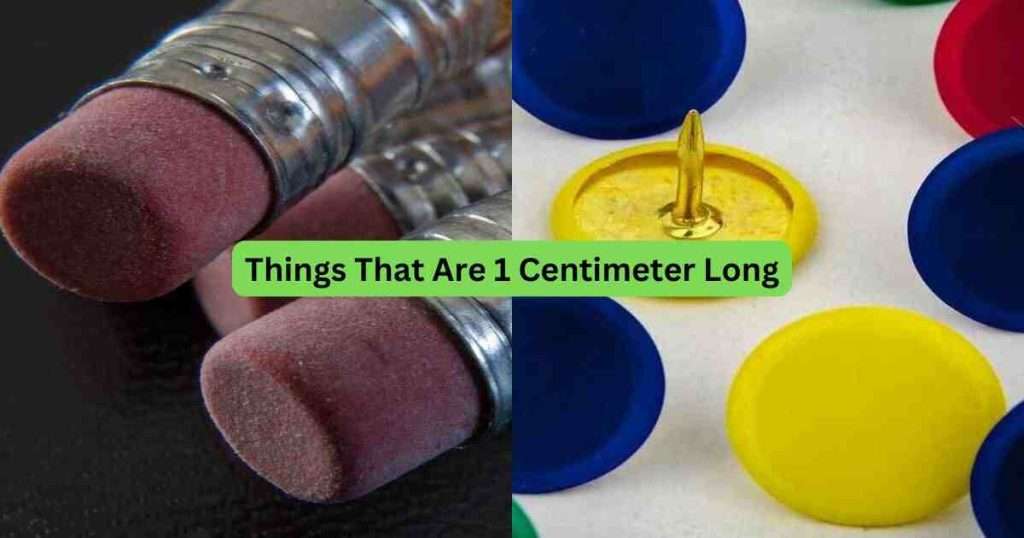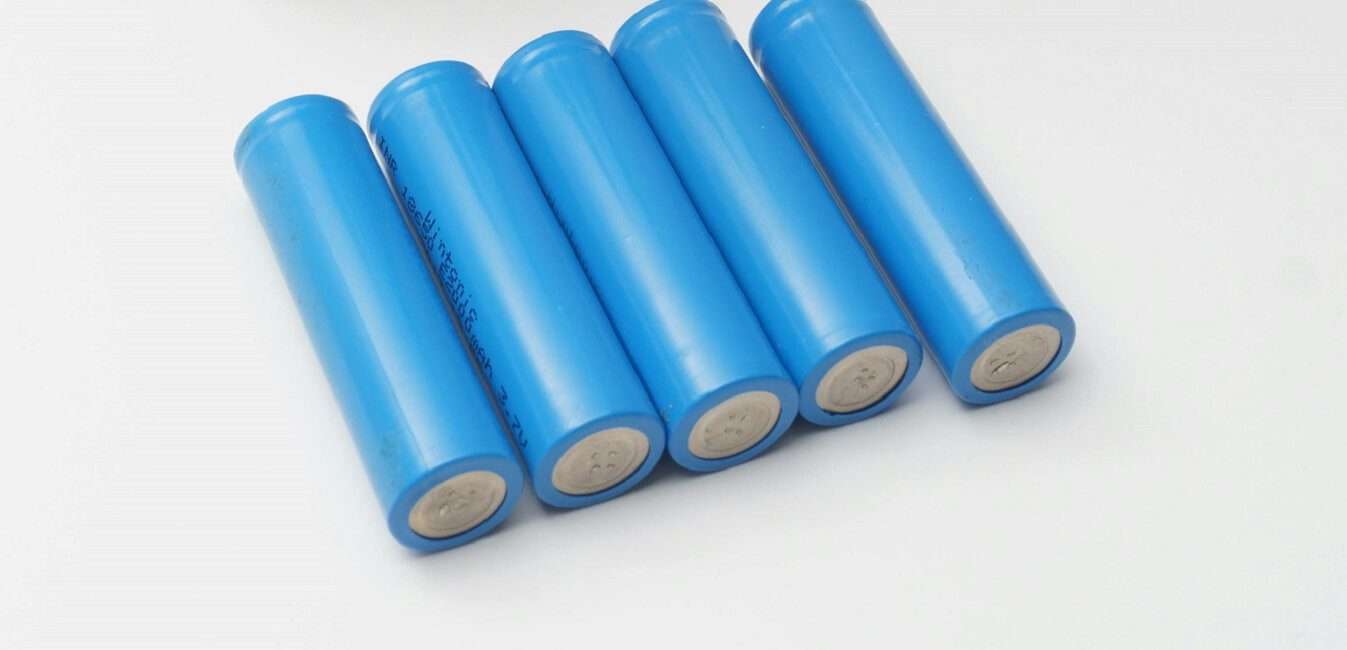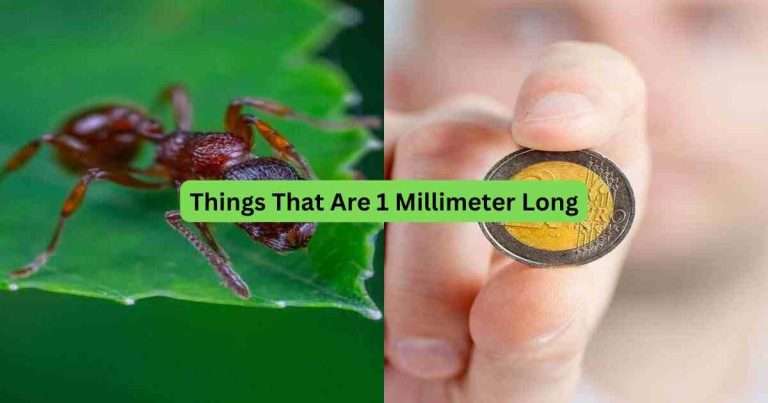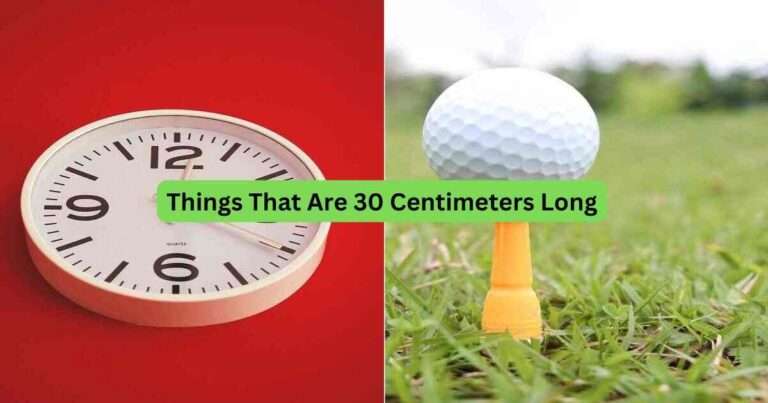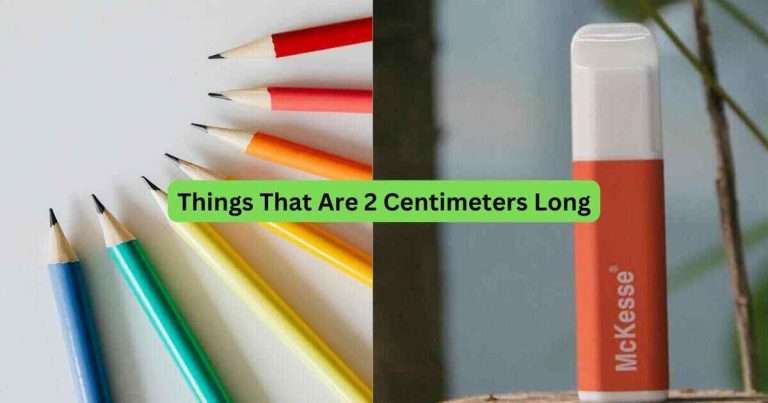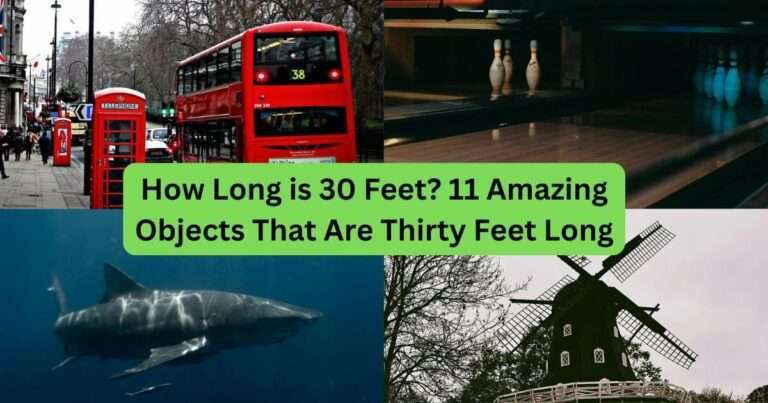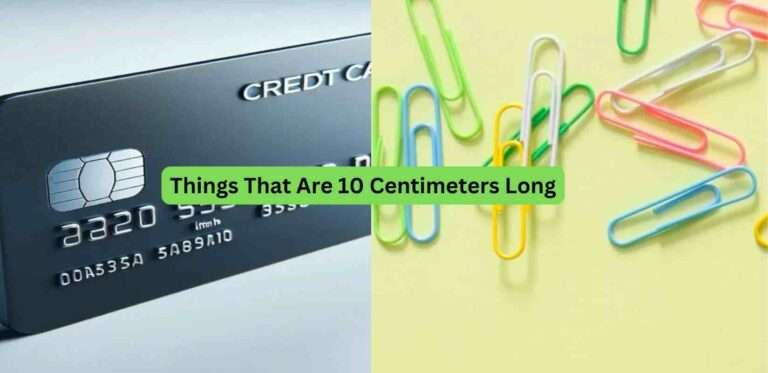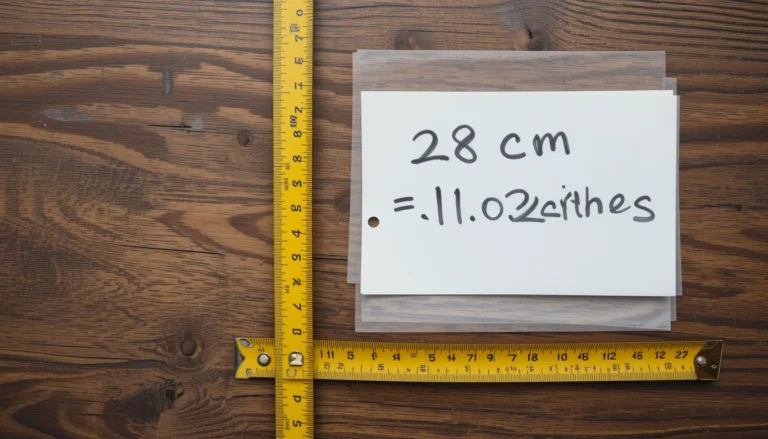Have you ever wondered what 1 centimeter actually looks like? It’s a small measurement, but it shows up in many everyday objects we interact with—whether we realize it or not!
From the head of a thumbtack to the width of a paperclip, countless items measure about 1 centimeter, making them perfect references for understanding scale.
In this article, we’ll examine 11 common objects—like a house key, a shoelace tip, and even a bead—that can help you visualize what 1 centimeter looks like in real life. Whether you’re teaching kids about measurements or simply curious, these everyday items will make the concept of 1 centimeter easy to grasp and fun to explore!
How Long is a Centimeter?
A centimeter (cm) is a small unit of length used in the metric system. It equals 10 millimeters (mm) or 0.01 meters (m). That’s really short—about as long as the tip of your finger. It’s also 0.00001 kilometers (km), which shows how tiny it is compared to long distances.
In the imperial system, 1 centimeter equals about 0.39 inches, or just under half an inch. It’s also about 0.0328 feet and 0.0109 yards. If you picture a U.S. paperclip, its width is close to 1 cm.
Knowing these conversions helps you compare lengths between centimeters, inches, feet, and yards. So next time you see a small object like a button or a LEGO stud, you’ll know—it’s probably around 1 cm long!
11 Everyday Objects That Measure About 1 Centimeter Long
Many everyday items around us are about one centimeter in size, making them perfect examples of this small measurement. Everyday tools such as pencil erasers and the width of a keyboard key provide practical, relatable ways to visualize a centimeter in action. These items are all easy to find and help make abstract measurements more concrete.
1. Five House Keys

House keys are small but very important. A regular house key is about 5 centimeters (cm) long, 2.2 to 2.5 cm wide, and around 0.2 cm thick.
If you stack five house keys on top of each other, each with a thickness of approximately 0.2 centimeters, the total height would be the sum of their thicknesses, resulting in a height of exactly 1 centimeter because 0.2 cm × 5 = 1 cm.
Even though they’re tiny, house keys are made with exact shapes and cuts to fit perfectly in locks. I’ve shown students that stacking keys is an easy way to see how thick 1 cm is. It helps turn something confusing into something you can touch and see. So next time you hold your key, remember—it’s not just for opening doors, but also a cool tool to learn measurements!
2. Head of Thumbtack
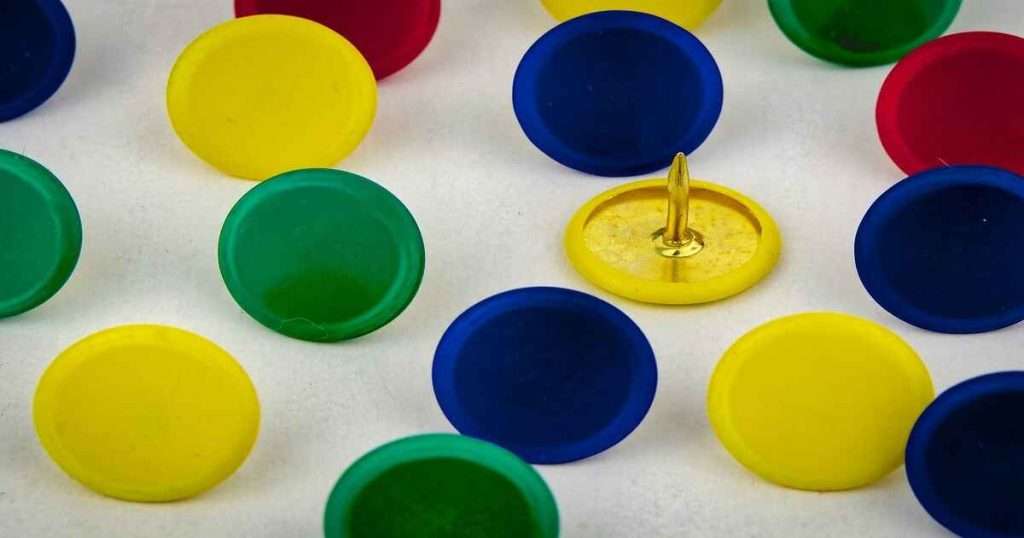
The head of a thumbtack is small and round, just right for holding papers to a board. Most thumbtack heads are about 1 centimeter (cm) wide. The full thumbtack, from the top of the head to the sharp point, is usually about 1.5 cm long.
I’ve often used thumbtacks in class to pin up drawings, and they’re perfect for showing how wide 1 cm is. The flat top is easy to press and sticks nicely into cork or wood.
Even though it’s tiny, the thumbtack head helps make the idea of centimeters easier to see. If you place a ruler next to it, you’ll notice it almost matches that 1 cm mark. So the next time you use one, think of it as more than a tool—it’s also a mini measuring guide!
3. Width of a Paperclip

A regular paperclip is a small tool used to hold papers together. Its width is about 1 centimeter (cm), making it a great real-life example for learning this short unit of measurement. Its total length is about 3.5 cm, and the thickness of the wire is around 0.1 cm.
I remember using paperclips in school, and they’re super helpful—not just for organizing notes, but also for showing how wide 1 cm is. When you look at the side of a paperclip, you can see how small a centimeter is.
Because they’re so common in homes, classrooms, and offices, paperclips are easy to compare to other items. Next time you pick one up, check its size—you’ll hold a perfect 1 cm example in your hand!
Read More >>> 13 Common Things That Are 15 centimeters Long
4. Shoelace Tip (Aglet)
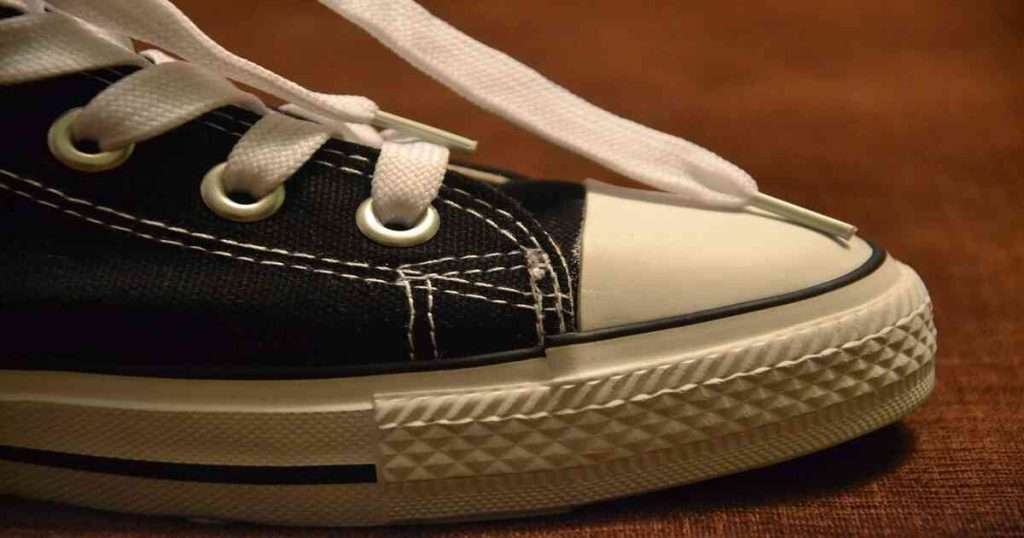
The small tip at the end of a shoelace is called an aglet. It’s usually around 1 centimeter (cm) long and about 0.3 cm thick. It can be made of plastic or metal and helps prevent the lace from coming apart.
I’ve noticed that without an aglet, it’s really hard to push the lace through the holes in your shoes. That tiny piece keeps everything neat and easy to use. Even though it’s small, it’s strong and super helpful. It’s also a great way to understand how long 1 cm is.
Just look at the end of your shoelace—the part you hold to tie it is about the same length. It’s a simple, everyday tool that helps explain small measurements in a way anyone can see and feel.
5. Two Pencil Erasers

A regular pencil eraser is small and round, with a diameter of about 0.5 centimeters (cm). If you place two erasers side by side, their total width is about 1 cm. That’s a simple way to see how short 1 cm is. These small, cylindrical tools are commonly used by students, artists, and anyone needing to remove pencil marks.
Each eraser typically measures around 1.2 centimeters in length, and their compact size makes them easy to use and store, often found in desks or school supplies. The eraser’s design allows for precise corrections, whether you’re working on school projects or creative endeavors.
By visualizing two erasers together, you can better understand how 1 centimeter looks in real life. This everyday item is a great reference for measuring small units and can aid in grasping the concept of size and scale.
6. Diameter of a AAA Battery
The diameter of an AAA battery is about 1 centimeter or 10 millimeters, making it a handy reference for small measurements. This common household item powers many low-drain devices, such as TV remote controls, MP3 players, and digital cameras. Its size helps people easily visualize and compare small dimensions in everyday life.
A typical AAA battery is cylindrical and measures approximately 4.45 centimeters in length. Introduced by the American Ever-Ready Company in 1911, this battery size quickly became a standard in portable electronics worldwide. Its compact design balances power and convenience, making it one of the most recognized batteries globally.
7. Width of a Button
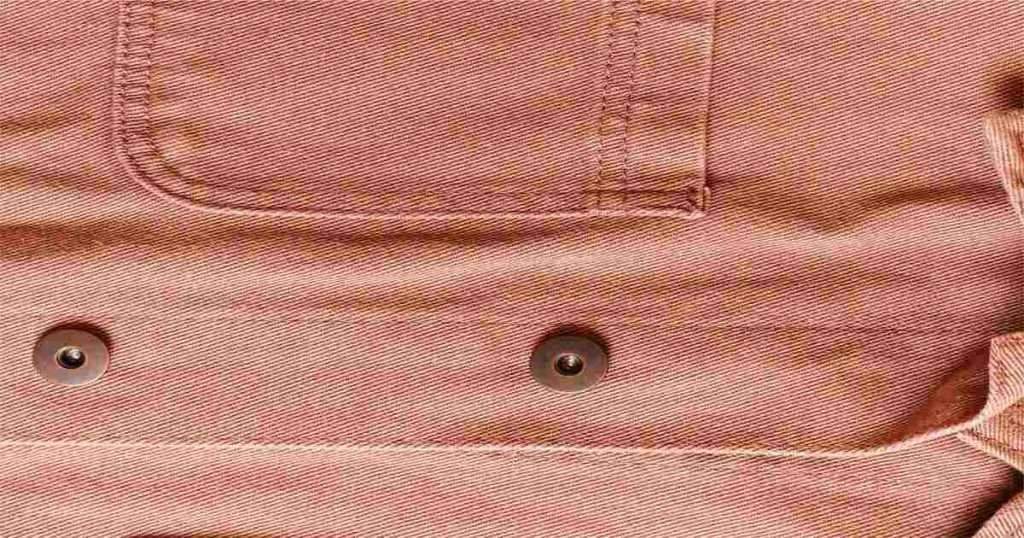
The width of a typical shirt or jacket button is about 1 centimeter, though most buttons have a diameter ranging from 1.5 to 2 centimeters. Their thickness is usually around 0.3 centimeters. Despite their small size, buttons play an important role in keeping clothes fastened securely.
Buttons are carefully designed to fit through matching buttonholes, balancing function and style. Because they are common in everyday clothing, buttons offer a simple way to visualize the length of 1 centimeter.
Whether you’re sewing on a new button or fastening your coat, they provide a practical example of small measurements used daily in fashion and home life.
Read More >>> 11 Common Things That Are 2 mm Thick or Long
8. Height of 9 CDs Stacked
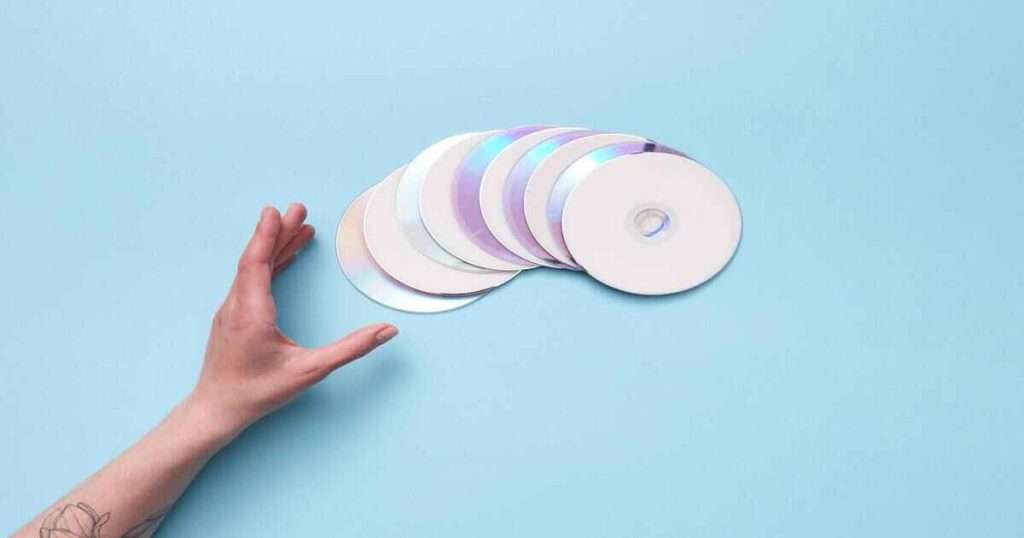
Stacking nine standard CDs creates a pile about one centimeter tall. Each CD is roughly 1.2 millimeters thick, so putting nine together gives a handy way to picture this small measurement.
CDs are well-known for storing music and data, making them a familiar and practical example for understanding the size of one centimeter.
Introduced in 1982 by Philips and Sony, the compact disc revolutionized how we listen to music and save information.
Whether remembering the days of physical music collections or learning about measurement, a stack of CDs offers a relatable and tangible way to grasp small lengths in everyday life.
9. The Thickness of a Notepad
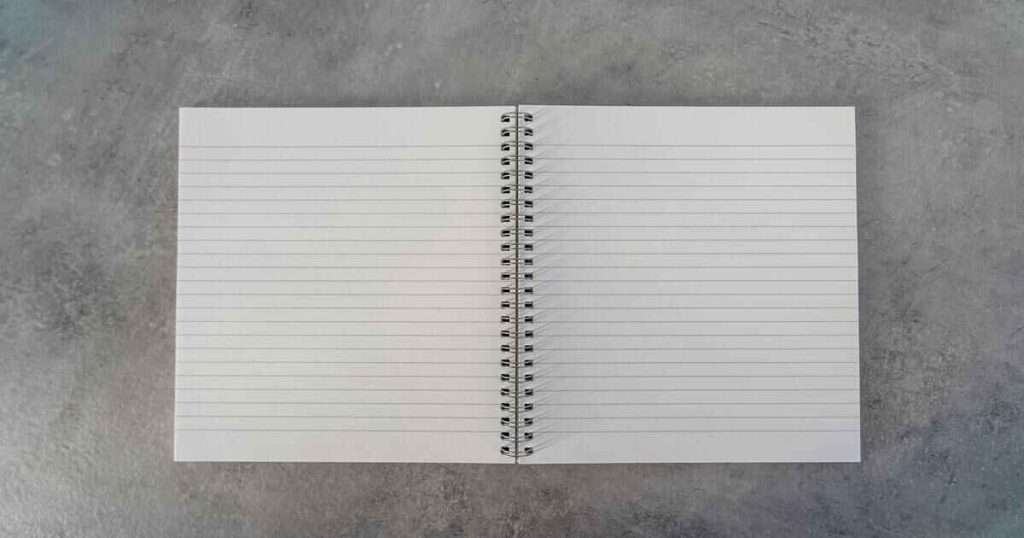
The thickness of a standard notepad is typically around 1 centimeter. This measurement reflects the combined thickness of several sheets of paper, making it a practical and relatable reference for understanding small dimensions.
Notepads are commonly used for writing, note-taking, or making lists, and their compact size makes them easy to carry around. Whether it’s for jotting down ideas, reminders, or schoolwork, the 1-centimeter thickness of a notepad is a handy example for visualizing small measurements in everyday life.
Whether you’re jotting a quick note on your way out the door or organizing tasks on your desk, a notepad is a familiar and relatable object that serves as a simple reference for grasping the concept of one centimeter.
10. The Width of a Key on a Keyboard
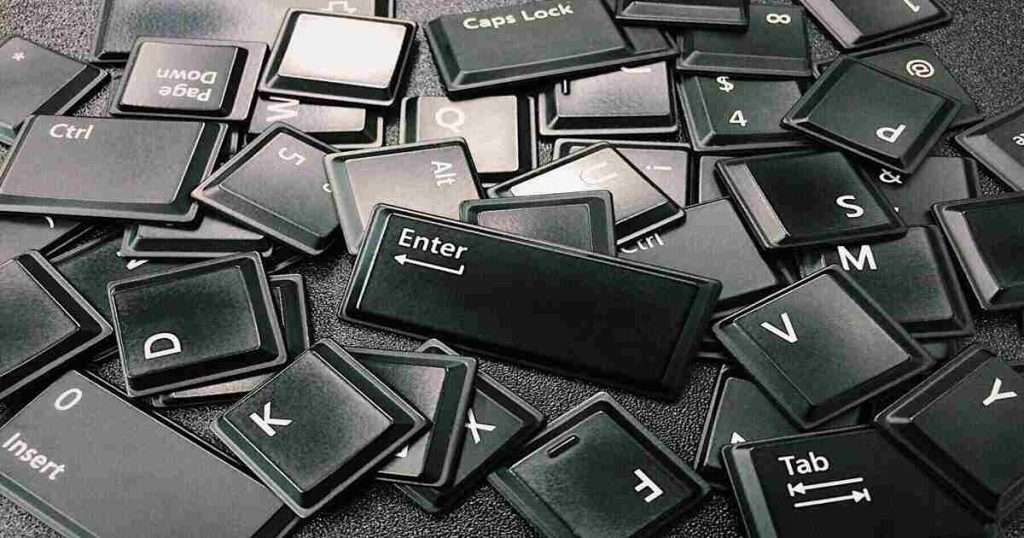
The width of a standard keyboard key is about 1.5 to 1.8 centimeters, a bit larger than 1 centimeter. This size is carefully designed to offer comfort and accuracy while typing, helping users press keys without feeling cramped or making mistakes.
Each key’s consistent width creates a smooth typing experience, whether you’re writing emails, working on projects, or playing games. This small but important measurement provides tactile feedback and ease of use, making it a useful example to understand how tiny dimensions matter in everyday technology.
11. Length of a Staple
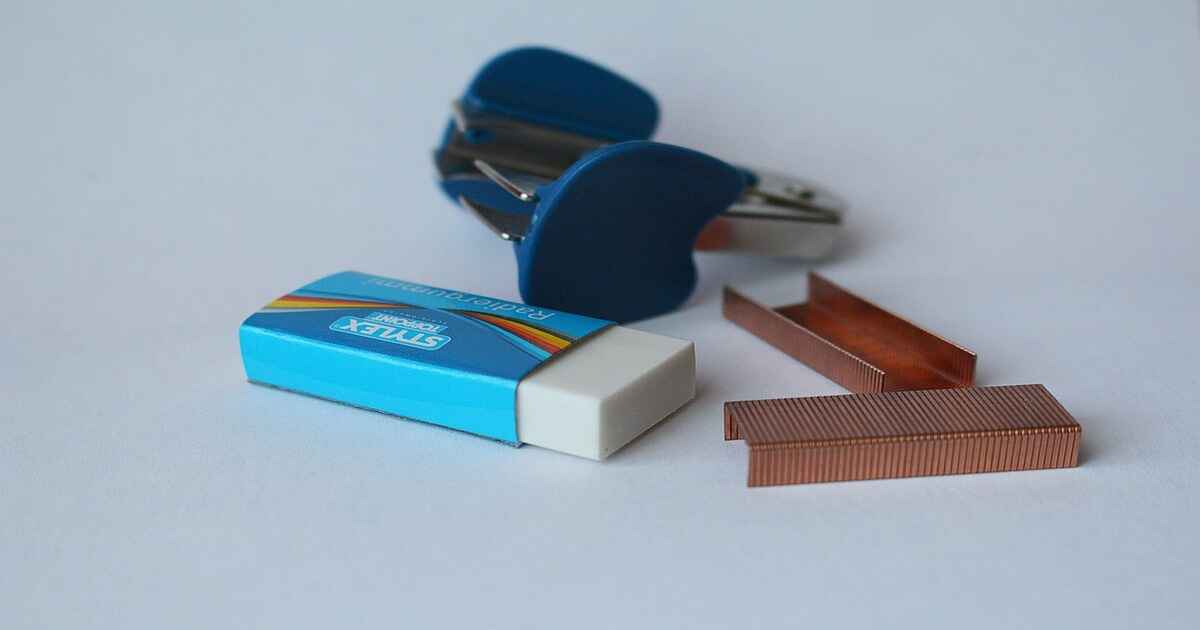
A standard staple measures approximately 1 centimeter in length. This small but essential tool is designed to puncture paper and fold over its edges to bind documents together securely. Its compact size makes it a practical and reliable office supply.
The sharp legs of a staple allow it to grip paper tightly, ensuring that the sheets stay organized and attached without slipping. Commonly used in offices and schools, staples are vital for keeping paperwork in order. This tiny, simple tool is a great reference for understanding small measurements in everyday office tasks.
Conclusion
Understanding the concept of 1 centimeter can be easier than it seems when we look at everyday objects. From the head of a thumbtack to the width of a paperclip, these small items provide perfect visual references to grasp the idea of 1 centimeter. They help bridge the gap between abstract measurements and real-world applications, making measurements more tangible and relatable, whether for organizing papers, tying shoes, or securing notes to bulletin boards.
Objects like the shoelace tip (aglet), house keys, and staples are all examples of how small measurements play crucial roles in daily tasks. By using these common items, we can better understand and appreciate the scale of small objects. Recognizing 1-centimeter measurements in the world around us not only enhances our understanding of size but also helps us see how tiny details impact the functionality of the tools we rely on every day.
Frequently Asked Questions
What is 1 centimeter in inches?
1 centimeter is equivalent to approximately 0.3937 inches. This is a common conversion used to compare metric and imperial units of measurement.
How long is 1 centimeter in everyday objects?
A thumbtack head, the tip of a shoelace (aglet), and the width of a paperclip are everyday objects about 1 centimeter long. These items provide a visual reference for understanding this small unit of length.
How many millimeters are in 1 centimeter?
1 centimeter is equal to 10 millimeters. This is a standard conversion in the metric system, where the metric system divides each centimeter into 10 smaller units called millimeters.
What are some items that measure around 1 centimeter in length?
Common items that measure about 1 centimeter include house keys, the head of a thumbtack, beads used in crafts, and the width of a button. These objects provide a tangible way to visualize 1 centimeter.
How do I measure something in centimeters accurately?
Use a ruler or measuring tape with centimeter markings to measure something accurately in centimeters. For precision, ensure the object is placed flat against the ruler and the measurement is taken from the edge.

